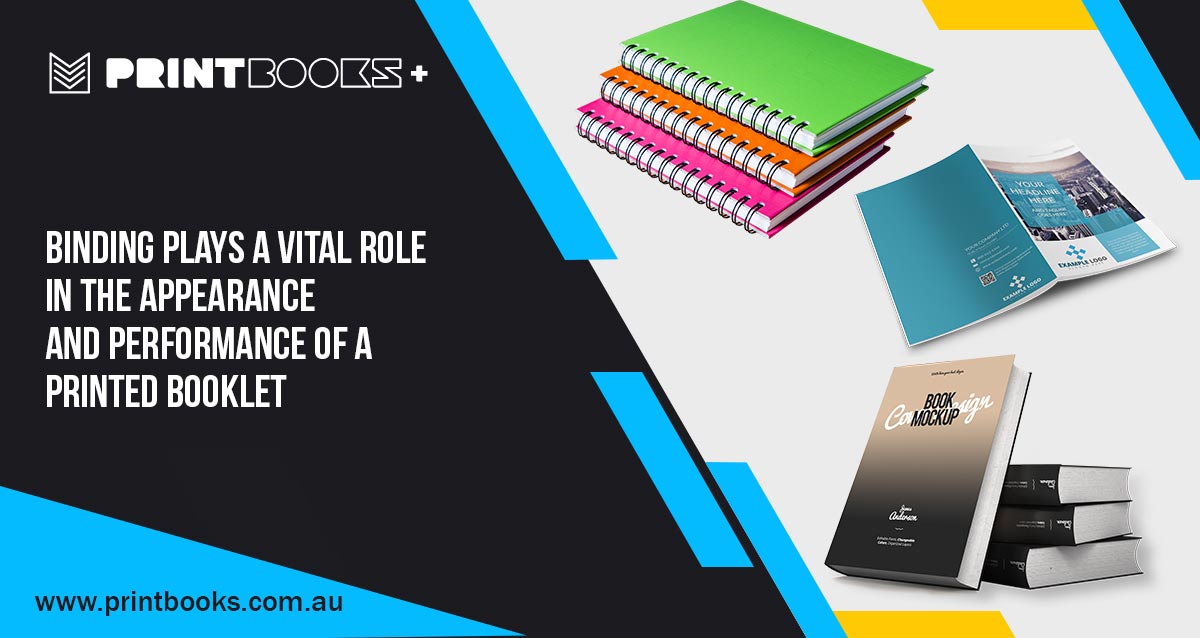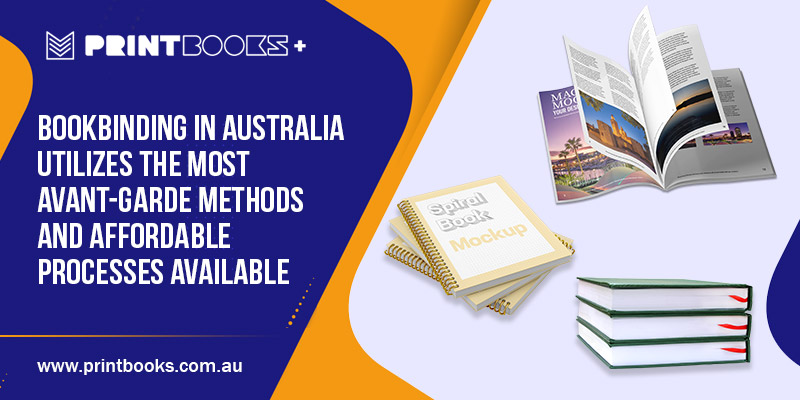How to choose the right book binding type for your project

Do you need your open book to lie flat or like catalogue, user manual or like a cookbook? Bookbinding types play an essential role in the performance and appearance of a printed book and booklet binding.
Your book and booklet binding is as significant as the words and thoughts inside. Books can look stunning, but their function weights more than looks.
Picking the most suitable bookbinding types for a specific print project requires taking into account several characteristics, such as the number of pages, function of the book or booklet, the expected quality of presentation, and your printing budget.
Whether stapled or glued or otherwise bound together, a good binding turns a stack of sheets into a book, notepad, comic book, manual or magazine. Printbooks book binding Melbourne offers various book printing and binding types, from spiral binding to glueing, and illustrates how to decide the perfect book and booklet binding for your printed product.
Read on to learn more about the various bookbinding types. You’ll presumably recognize at least a few of them.
The ultimate guide to choosing your best bookbinding types
Case Binding
Case binding is also known as hardcover binding, and this is a typical bookbinding type that you’ll see is by far the best binding technique.
In the past, all major books were hardbound. The inside pages are typically sewn together in sections and glued to the endpaper hardcovers at the spine.
This bookbinding method is most suitable for documents with page counts ranging from 60-400. When opened, the case bookbinding lay flat on the table.
Perfect Binding
Perfect binding is the most popular binding you’ll find in bookshops. It is also known as softcover binding. And similar to case binding except for the lower quality cover.
A perfect binding cover is created from heavy-weight cardstock paper, usually laminated or coated to shield the book. The covers and pages are stuck together with a super strong glue.
This particular bookbinding style is an ideal choice for nearly any project, and the finished product is comfortable to stack and appears exceptionally professional. Books, catalogues, annual reports and collection of documents do well with perfect binding.
Saddle Stitch
Saddle stitch bookbinding is more suitable for books with few pages. The excellent alternative for books that might have short term use. And stitching can be done with or without a book cover.
Using saddle stitch bookbinding method, documents affixed with staples down the middle of large, loose-leaf sheets to secure them, it is cost-effective, and it’s perfect for binding booklets for smaller projects.
You frequently see saddle stitch used with smaller magazines, zine, and catalogues documents ranging from 8-80 pages that don’t need to have a long life.
Wiro Binding
Wire-O book and booklet binding are assembled by punching holes in the pages of a record and passing “C” shaped twisted wires through holes then squeezed closed to form the “O” shape. Allows pages to be laid side-by-side on a flat surface for ease of reading and use.
Wiro binding is best suitable for documents ranging from 16-275 leaves and is a widespread choice for both small and large documents as well as desk calenders and hangings.
Wiro binding is an affordable option for reports, extensive projects, recipe books and employee training books.
Spiral Binding
Spiral binding method is also known as a double loop, twin loop, duo-wire, double-o. It uses pre-formed pairs of wire loops inserted through the holes and punched along the edge of the book pages and covers.
A serial plastic coil is threaded via the left edge of the perforated leaves to build the book. This procedure is very cheap and allows for a wide range of page counts and sizes. Users can fold the book back to save space in crowded areas.
This attribute makes spiral binding a practical option for manuals, guidebooks, educational workbooks, and directories use spiral binding.

Top Staple
Top staple binding refers to a ubiquitous book printing and binding process in which folded sheets are converged together on one side the other and then staples via the fold line from the outside and clinched between the centermost pages.
Two staples are commonly used, but numerous books may need more staples along the spine. The staples are thrust about 1/4 inch from the binding edge, so the inside margin should be plentiful. And top staple stitching pieces do not lie flat when open.
Padding
Padding is more or less designed for all-around use, and it is suited for most materials. Different notepads and other paper products are bound together from padding. Bookbinders Melbourne similarly creates removable note pads to create perfect bound books.
One of the main advantages of padding is flexibility; Printbooks book binding melbourne manufacturers typically stack the papers, compress them, and glue them together without burring.
Printed Covers
When you hand out your book, as many of the people gaze their eyes on the cover and will inevitably judge it by its cover, so printed covers play a vital role in the finished book.
There are several alternatives to consider while designing the blanket of the book. PrintBooks prints a fully printed cover with a durable laminate finish, and adding internal flaps can be the primary way to enhance the look and handling of the book.
Professional bound and printed cover books with good quality, high-resolution images and sturdy binding instantly give a good impression of the binding company, customers, and clients who choose your services.
Self Covers
Self covers signify that the paper used for the cover of a book or other bound document is the same paper stock as the inner pages, then it is known in the printing world as a self-cover.
One of the benefits of the self-cover is that refraining the heavier paper for the cover saves money. Bookbinders Melbourne offers self covers most commonly used in conjunction with the saddle stitch bookbinding and spiral bound applications. Helping the customers get what you want out of your print budget.
Self covers refers to the outside cover of price booklets, comic books, newsletters, brochures and magazines.
Each style of bookbinding type has its impressive features, and picking the finest one for you depends mainly on the project. At Pintbooks, we present a wide range of print, bind and designs solutions to complete your project. With over 20 years of venture in book printing and binding in Melbourne, we assist you to make the right decisions that make your book not only functional but beautiful.
